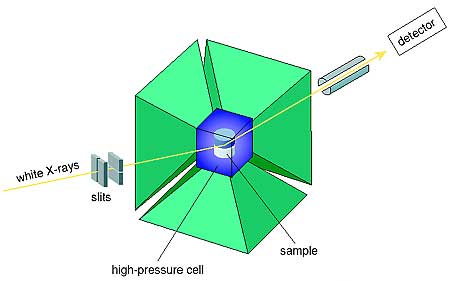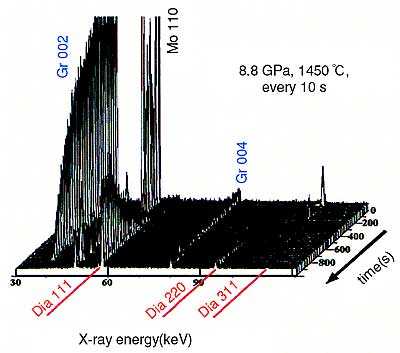It is well known that graphite is transformed to a diamond under high pressure-temperature conditions. Natural diamonds were formed in the interior of the earth, while large quantities of diamonds are now industrially synthesized by high pressure-temperature technology. When using a large volume press, however, the real-time observation of the diamond conversion process has been very difficult because the reaction occurs in a heavy high-pressure vessel.
Synchrotron radiation allows direct observation of such reactions in a high-pressure vessel. We have been successful in making, for the first time, an in situ observation of a graphite-diamond transition with the time-resolving X-ray diffraction method by using a large high pressure-temperature apparatus installed on the JAERI beamline at SPring-8. Graphite peaks clearly become smaller while the diamond peaks become larger (Fig. 8-9). By analyzing the experimental data obtained under various pressure-temperature conditions, we can determine the kinetics of this transition, the mechanism of nuclei formation, and crystal growth of the diamond.
This study provides important information about diamond synthesis technology and significant insight into the formation mechanism of natural diamonds in the earth. |


